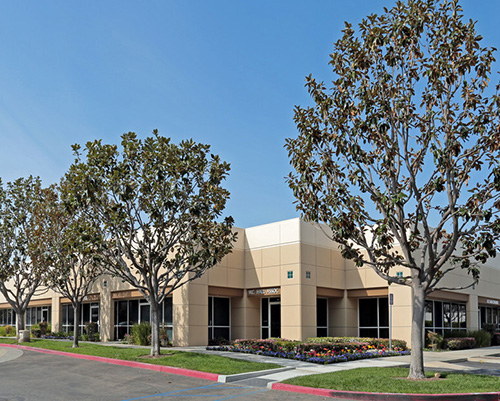Glossary
A helpful glossary to help define some of the common terms you’ll find around our website
A | B | C | D | E | F | G | H | I | J | K | L | M | N | O | P | Q | R | S | T | U | V | W | X | Y | Z
A
Authentication
The process of proving an individual’s identity. Typically, this process utilizes a single or multiple authentication factors – see multi-factor authentication.
API
Application Programming Interface (API) is a set of functions and procedures allowing the creation of applications that access the features or data of an operating system, application, or other services.
B
Biometric Identification
Biometric identification is the method of authenticating users by their biology such as their fingerprint.
C
Cloud
This term is used to describe the use of remote servers to host the network on the Internet.
Credential
Typically a username and/or password – a credential is a piece of information a user employs to identify themselves. A user’s credential can be used to authenticate access to applications, but it is not a strong method of authentication.
CRM
CRM or Customer relationship management is a database used to manage and analyze customers and leads, to help maximize engagement and nurture potential customers through the sales funnel.
D
DMZ
DMZ or demilitarized zone is a subnetwork that contains and exposes an organization’s external-facing services to potentially untrusted networks such as the internet.
E
ERP
ERP or enterprise resource planning is an integrated management tool for operational processes within an organization including but not limited to: order processing, CRM, logistics, and human resources.
F
Factors
Authentication factors are the methods a user can employ to prove their identity i.e. fingerprint or a one-time code.
Fingerprint
A fingerprint can be used to authenticate access to an application by proving the user is who they say they are. Each fingerprint contains unique characteristics (friction ridges) that can be used to identify them.
H
HA or HA pairs
HA refers to High Availability and consists of two appliances configured to take over each other’s storage as a fail-safe. Typically one appliance would be active and the other appliance would be passive.
I
IP address
An IP address is a numerical sequence used to identify a particular device. The device would be connected to a network that uses the Internet Protocol for communication. Typically an IP address consists of numbers that are separated by dots i.e. 90.152.34.162.
L
LAN
LAN or local area network is a network made up of a number of interconnected computers all sharing the same link to the server, within a defined area such as an office.
Load Balancers
Load balancers enhance the distribution of workloads during peak activity so users continue to experience the same speed of service. Typically, the load or traffic is distributed across multiple servers using different methods.
M
Multi-factor authentication (MFA)
Multi-factor authentication is a security system that requires more than one method of authentication from independent categories of credentials to verify the user’s identity for a login.
N
NITGEN
NITGEN is the fingerprint reader Swivel Secure utilises to help authenticate users from their fingerprint. The NITGEN reader is a separate piece of hardware that is connected to the user’s computer.
O
One-time codes (OTCs)
A one-time code (OTC) is a password or passcode that can be used once for authentication. After it is used it cannot be used a second time for authentication, and a new one-time code must be supplied.
P
PINpad®
PINpad® is an alternative way of implementing image-based authentication. In this model, the user is presented with a scrambled keypad, and they have to click on the images that represent their PIN, rather than perform a one-time code extraction from, for example, a TURing image.
PINsafe®
PINsafe® combines the use of PIN, with random 10-digit security strings, to create unique OTCs. The protocol works by sending a 10-digit numeric or alphanumeric string to a user by SMS, Mobile app, email, or the TURing image.
Perpetual license
A license that won’t stop working due to license expiry.
R
Risk-based authentication (RBA)
Risk-based authentication (also known as adaptive authentication) is a non-static authentication system that takes into account the profile of the agent requesting access to the system to determine the risk profile associated with that transaction.
S
Single sign-on (SSO)
Single sign-on is a property of access control of multiple related, yet independent, software systems. With this property, a user logs in with a single ID and password to gain access to a connected system or systems without using different usernames or passwords.
SAML
Security Assertion Markup Language (SAML) is an open standard for exchanging authentication between parties. SAML is an XML-based markup language enabling Swivel Secure to use SAML as part of their multi-factor authentication platform.
T
TURing
A 10-digit code is presented in the form of a rectangular image, and the user then takes the number represented by their PIN. For example: if their PIN is 1370, then they simply take the 1st, 3rd, 7th, and 10th character to generate the one-time code (OTC).
V
Voice
Voice is an authentication method utilized within the AuthControl Sentry platform for authenticating access to applications. Voice works by calling the user on a telephone and speaking the one-time code (OTC) or PUSH notification.
Virtual IP
A virtual IP is an IP address that doesn’t correspond to an actual physical network interface.
X
XML
XML or Extensible Markup Language is a markup language that defines a set of rules for encoding documents in a format that is both human-readable and machine-readable.

